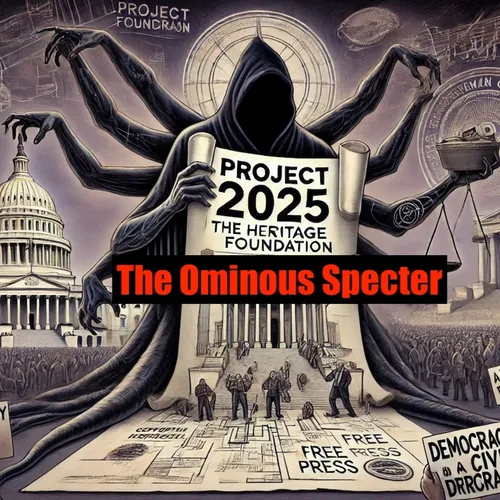Alarming Project 2025: A Threat to American Democracy
- Author
- Quiet.Please
- Published
- Sun 16 Mar 2025
- Episode Link
- https://www.spreaker.com/episode/alarming-project-2025-a-threat-to-american-democracy--64922659
As I delve into the intricacies of Project 2025, a sense of unease settles in, not just because of the radical nature of its proposals, but also due to the incremental and strategic ways these policies are being implemented. This 900-page blueprint, crafted by the Heritage Foundation and a cohort of conservative scholars, is more than just a distant vision; it is a meticulously laid out plan to reshape the very fabric of American governance.
At its core, Project 2025 aims to centralize power in the executive branch, a move that critics argue would erode the system of checks and balances that has been a cornerstone of American democracy. One of the most alarming aspects of this plan is the proposed reinstatement of Schedule F, an executive order that former President Trump issued in October 2020. This order would strip career government employees of their employment protections, allowing the president to fire and replace them with loyalists and ideologues at will[3].
The implications of Schedule F are far-reaching. It would politicize the civil service, enabling the president to dismiss dedicated civil servants who have spent years serving the nation, regardless of their performance. This move would not only undermine the continuity and integrity of government operations but also pave the way for an authoritarian takeover. As the Kettering Foundation explains, "Understanding the Schedule F threat is critical to stopping it," because it fundamentally changes the character of the federal government, advancing the US toward authoritarianism[3].
Project 2025's vision for federal agencies is equally troubling. The plan calls for dismantling or abolishing key agencies such as the Department of Education and the Department of Homeland Security, while significantly altering the roles of others like the Department of Justice (DOJ) and the Federal Trade Commission (FTC). The DOJ, for instance, would be thoroughly reformed to combat what Project 2025 terms "affirmative discrimination" or "anti-white racism," a move that would involve prosecuting state and local governments, institutions of higher education, and private employers with diversity, equity, and inclusion (DEI) programs[2].
The impact on public education is particularly devastating. Project 2025 proposes eliminating Title I funding, which has provided critical financial support to high-poverty schools since 1965. Instead, states would receive no-strings-attached block grants with zero regulations or oversight. This change would strain already tight education budgets, undermine academic outcomes for millions of vulnerable students, and exacerbate teacher shortages in low-income communities. As Will Ragland from the Center for American Progress notes, "Removing Title I funding would mean losing thousands of teachers and ultimately limiting children’s access to quality instruction"[4].
Healthcare is another area where Project 2025's proposals are starkly at odds with the needs of many Americans. The plan includes slashing Medicare and Medicaid, stripping away healthcare coverage for pre-existing conditions, and criminalizing the sending and receiving of abortion and birth control medications. These measures would have far-reaching consequences, particularly for women facing severe health risks during pregnancy, who may be denied life-saving care if abortion is not considered healthcare[1].
The project's stance on immigration is equally draconian. It recommends transferring custody of immigrant children from Health and Human Services (HHS) to the Department of Homeland Security (DHS), prioritizing enforcement over welfare. This move would expand detention centers and worsen the safety and psychological well-being of vulnerable immigrant children. Additionally, the plan proposes mass deportation of illegal immigrants and the deployment of the U.S. Armed Forces for domestic law enforcement[1][2].
In the...
